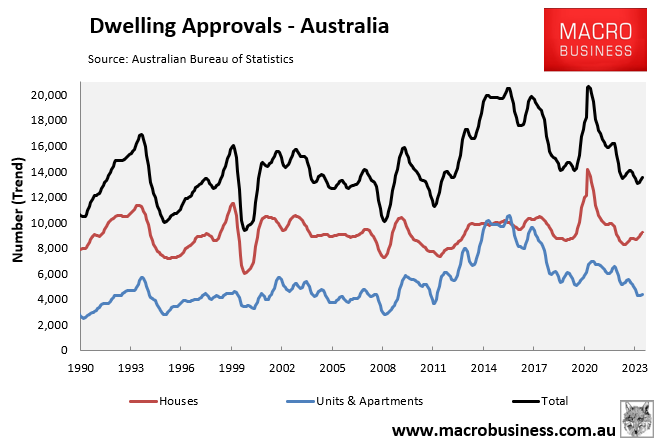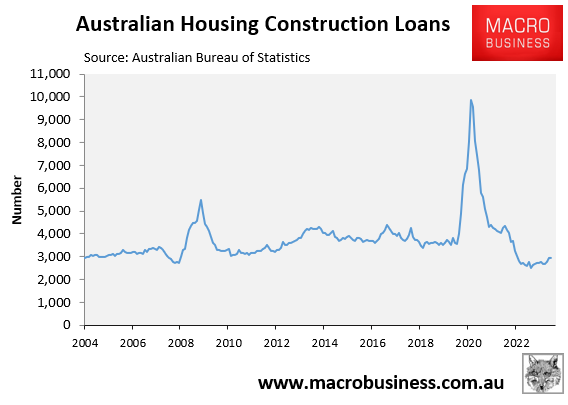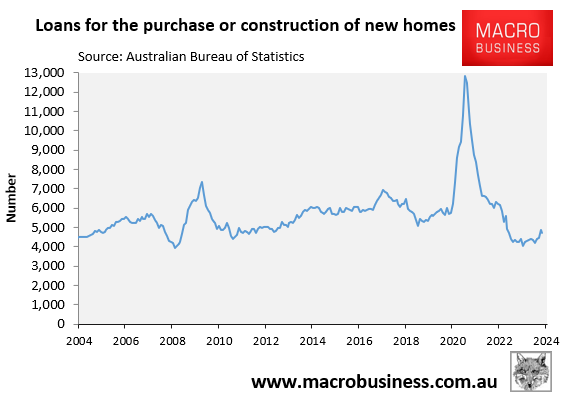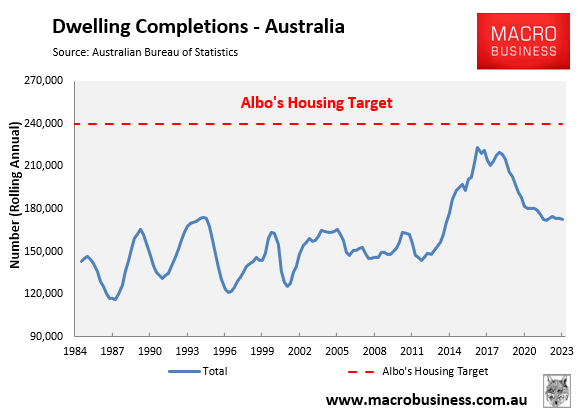Last week, the Australian Bureau of Statistics (ABS) released dwelling approvals data showing that only 13,500 dwellings were approved for construction in May in trend terms:

This level of approvals is 6,500 (32.5%) below the monthly run rate of 20,000 required to meet Labor’s target of building 1.2 million homes over five years.
On Monday, the ABS released data on mortgage commitments for the construction or purchase of new homes, which also remained in the gutter.
Only 2968 loans were approved to construct a new home in May, which was down 70% from the January 2021 peak and 19% below the historical average of 3671.

The picture is similar when loans for the construction or purchase of new homes is combined:

Only 4963 loans were approved for the purchase or construction of new homes in May, which is 63% lower than the January 2021 peak and 10.5% below the historical average of 5551.
In response to the data, Housing Industry Association (HIA) Senior Economist Matt King commented:
“Lending for new homes remains around the lowest levels observed since interest rates began rising, and well below the 20-year average”.
“This continued weak result in new home lending does not bode well for the supply and delivery of new homes to market in short to medium term”.
King also estimated that Australia is experiencing a “shortfall of more than 50,000 homes a year”, which will “add further strain to historically high dwelling prices and rents across the country”.
King’s comments follow those of HIA chief economist Tim Reardon, who warned that “we don’t have the industry getting to that 240,000 rate of build required within the next 10 years”.
The Albanese government’s 1.2 million housing target requires 240,000 homes to be built every year for five consecutive years – a level that has never been achieved before:

Expecting the rate of construction to magically rise to 240,000 dwellings a year amid high interest rates, materials and labour costs, and widespread builder insolvencies is pure delusion.
The only realistic solution to Australia’s housing shortage is to slash immigration to a level below the nation’s capacity to build housing and infrastructure. Otherwise, the housing situation will continue to deteriorate.

